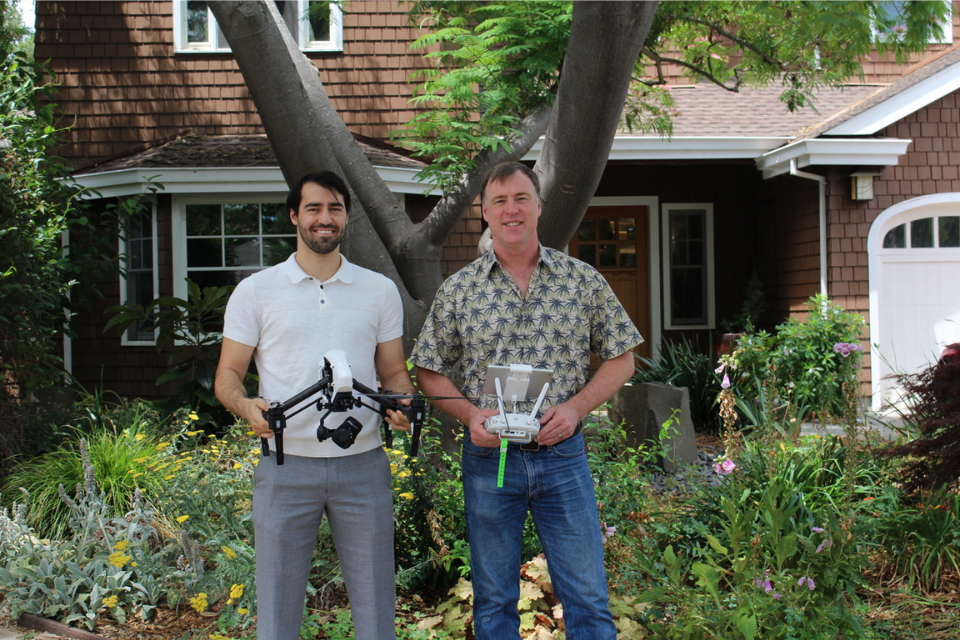Poised to be the world’s fourth biggest economy, California is on the hook to act on climate, and by most standards it is a leader. Part of the reason for this is a booming climate and clean energy ecosystem – in fact, it’s where New Energy Nexus, formerly known as the California Clean Energy Fund was founded.
Our portfolio of public and privately funded programs in California – some of the largest in the state – drive inclusive clean energy innovation. The CalSEED program stewards US$66 million in funding by the California Energy Commission for early-stage startups, CalTestBed provides entrepreneurs with access to more than 70 world-class testing facilities to test and de-risk their tech, and in collaboration with local partners in Inland Southern California we’re helping to seed a fully integrated advanced battery and electric vehicle (EV) manufacturing supply chain.

Rebecca Lee, Managing Director – California, New Energy Nexus
And overseeing all of this is our new Managing Director in California, Rebecca Lee. In this Q&A, she expresses her deep commitment to ensuring the clean energy economy works for the 100%.
How do you stay motivated to work in the climate space when the world is literally on fire?
More than a decade ago, I left academia as a tenured professor in Latin American Studies to join a cleantech startup. At the time, I never imagined that those two worlds would intersect so deeply. Much of my research and teaching examined the ways in which the unrelenting drive of the free market toward profitability over sustainability, the divestment in social infrastructure and the outsourcing of manufacturing and labor would ultimately exacerbate existing inequities.
Today, we are experiencing the consequences of this failed economic strategy. Yet, we also find ourselves in a watershed moment. With California’s US$48 billion Climate Commitment in 2022 plus the Federal IRA, we have a once in a lifetime opportunity to onshore critical supply chains and build the infrastructure needed to transform our economy to carbon neutrality, while creating high quality jobs and justice for the 100%. I know I am not alone when I say that we cannot afford to get it wrong this time.

Founders Thomas Karagianes (left) and Iain McClatchie (right) at TOLO supported by our CalSEED program.
“Tolo applauds the Inflation Reduction Act as a much-needed first step in the fight against climate change and a long-overdue investment in modernizing our aging energy infrastructure…“ – Thomas Karagianes, Founder, TOLO
What do you see as a major challenge to a clean energy transition in California?
Over the next decade, we need to double the size of our grid, radically change the way we move goods and people, rethink how we power our homes and build the critical infrastructure to decarbonize our economy. The greatest barrier is the lack of social infrastructure and collaborative frameworks to deploy capital and technology in a way that is equitable and inclusive. The task before us requires nothing short of a reimagination of entire energy systems and the social structures that underlie them.
We are grateful to the Torres Martinez Desert Cahuilla Indians, for example, for inviting us to be in partnership with them as we work alongside one another to rethink how California and tribal nations can partner for an equitable clean energy future rooted in a circular regenerative economy and pose questions such as, “What would it look like to have the original landowners at the helm of a place-based industrial strategy in Inland Southern California?”
What makes New Energy Nexus a unique partner in California’s clean energy transition?
Our strength lies in our ability to bridge the gap between macro-policy and implementation on the ground. In our CalSEED and CalTestBed programs, we support clean energy entrepreneurs who are driving toward our state’s goal of 100% carbon free electricity by 2045. We work in partnership with organizations that are rooted locally like the San Diego and Imperial Counties Labor Council and alongside Jobs to Move America and the UC Berkeley Labor Center who bring deep subject matter expertise but more importantly, the trusted relationships that allow us to be in service to the diverse stakeholders who are working to deliver on a just and equitable clean energy future.
And lastly, we strive to bring the grassroots up to the treetops by centering the lived experience of workers to shape the research that informs policy. More than a promise, we need a roadmap when we talk about public investment that inextricably links the decarbonization of our economy to high quality job creation and inclusive economic development.
Coreshell Technologies, a startup supported by our CalSEED and CalTestBed programs received a Series A funding of US$ 12M earlier this year.
How is New Energy Nexus cultivating a more inclusive innovation ecosystem?
As the clean energy and clean transportation sectors develop locally and nationally, having a strong workforce will require that opportunities for training, leadership and jobs are accessible to those communities impacted first and worst by climate change. New Energy Nexus has been piloting a program to develop ramps and career pathways for entrepreneurs and innovators in low resourced communities. As part of this effort, New Energy Nexus and the Center for Social Innovation at UC Riverside are hosting a Youth Innovation Summit and E-bike Challenge with local workforce and educational partners in Imperial County this fall. Our goal is to flip the script and show how young people in Imperial Valley are precisely the kinds of innovators and entrepreneurs who will help lead a new “green” economy in California.
What one clean energy tech are you most excited about?
Lithium battery recycling and start ups like Renewable Metals who are using non toxic processes to redeploy critical minerals like lithium, nickel, cobalt, copper, manganese and graphite back into the supply chain. We need to be innovating in a way that does more than just solve the problem right in front of us and instead, foster a circular regenerative economy where the entire life cycle of batteries is at the forefront of technology.